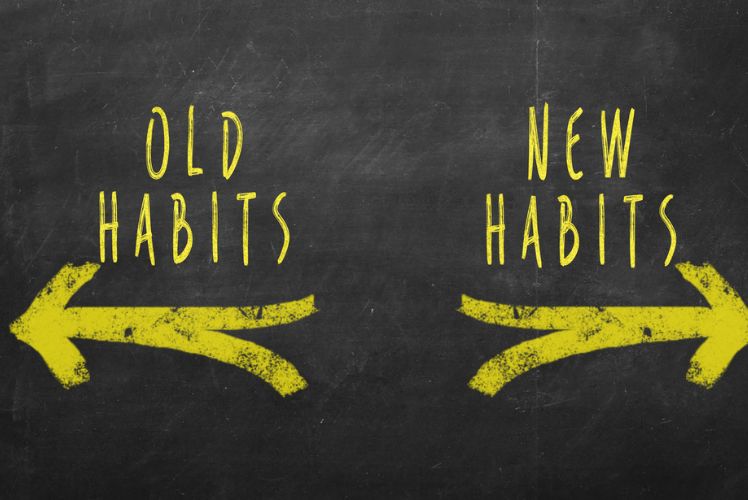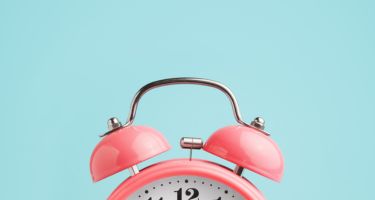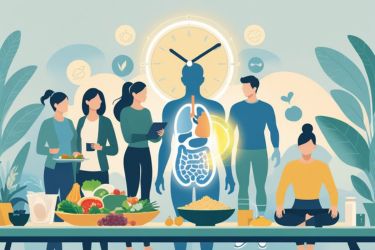Hey there, fellow habit explorer! Today, we're diving deep into the fascinating world of habits. Ever wondered why you reach for that biscuit tin every evening, or find yourself scrolling through social media first thing in the morning? Well, you're not alone. In fact, we're about to embark on a journey inspired by the insightful work of Charles Duhigg in his book "The Power of Habit”. So, grab a cuppa, get comfy, and let's unravel the mysteries behind our daily routines and behaviours. Whether you're looking to break free from a habit that no longer serves you or seeking to cultivate new, positive ones, we're here to unpack the secrets and unleash the power of habit in your life.
The Magic of Habits: Unveiling the Effort-Saving Cue-Routine-Reward Cycle
Alright, let's give that text a bit of a spruce-up:
So, picture this: it's the '90s, and a bunch of brainy minds at MIT are on a mission to uncover the secrets of habits. Their guinea pigs? Some rather fortunate mice with a sweet tooth. These little critters are tasked with navigating a T-shaped maze to find the holy grail of rodent delights: chocolate.
With cutting-edge gear, the researchers peer into the minds of these maze-runners as they sniff out their cocoa treasure. At first, it's all excitement – brains buzzing with anticipation at the scent of chocolate. But as the mice become maze masters, something intriguing unfolds. You see, as the mice get the hang of the maze – a straight march followed by a sharp left – their brain activity dips. It's a nifty little phenomenon called "chunking" – the brain's way of turning tasks into autopilot routines, saving energy for more exciting endeavours. And it's not just maze navigation that falls into this habit groove. Everyday tasks, like waking up to the alarm clock's call, follow a similar dance. Cue the alarm, cue the bleary-eyed shuffle to the bathroom, cue the minty-fresh reward of toothpaste triumph.
This trio – cue, routine, reward – forms the backbone of habits, shaping a whopping 40% of our daily antics, according to Duke University research. But here's the kicker: habits are tough cookies. Even with a brain on the fritz, habits can stand strong. Just ask Eugene, whose brain took a hit but left his habits unscathed. Asked to point to the kitchen door? No dice. But ask him about hunger, and he's raiding the snack cabinet like a champ.
Why? Well, it's all down to the basal ganglia – the habit hub nestled deep in our brains. This little powerhouse keeps the habit train chugging along, even when the rest of the brain is on the fritz. But beware: once a habit's got its claws in you, it's a tough one to shake. Even kicking a bad habit like smoking leaves you vulnerable to the siren call of relapse.
Cravings: The Magnetic Force Behind Habit Formation
Ever wonder why habits cling to us like super glue? Well, it all boils down to one sneaky little culprit: craving. Take this familiar scene: You've been treating yourself to a scrumptious chocolate-chip cookie every afternoon at work for what feels like forever. It's your little moment of sweet solace after a tough day's grind. But then reality hits – those snug trousers aren't feeling quite so snug anymore. Time to break the cycle. Yet, as you stride past the cafeteria, resisting the siren call of that cookie, what do you feel? Probably a tug-of-war between "just one more" and a grumpy mood fit for a rainy day.
Breaking a bad habit is like battling an insatiable urge for that end-of-the-loop reward. Back in the '90s, neuroscientist Wolfram Schultz delved into the brain's antics, using a macaque monkey named Julio as his curious canvas. Picture this: Julio, faced with a screen of shapes, learns to pull a lever for a drop of blackberry juice – his liquid gold.
As the connection clicks in Julio's brain – shapes, lever, juice – his anticipation skyrockets. That craving for the reward becomes his brain's new anthem. And boy, when the juice fails to flow, Julio's mood matches the stormy weather.But here's the silver lining: craving isn't all doom and gloom. It's the secret sauce for building good habits, too. Think about it – that rush of endorphins after a workout or the sheer pride of smashing your goals. Those little rewards become the glue that cements those healthy habits in place.
And businesses? Oh, they're onto this craving game like bees to honey. Take Claude Hopkins, the mastermind behind Pepsodent toothpaste. He didn't just sell a product; he sold a sensation – that cool, tingling freshness we now crave. So next time you reach for that toothpaste, remember: it's not just about the sparkle; it's about the craving it ignites.
Replacing Routines and Embracing Belief: The Keys to Habit Change
Changing a habit can feel like trying to paddle upstream without a paddle. Take kicking the smoking habit, for instance – when that nicotine craving comes knocking, it's like a relentless tide you can't ignore. But fear not, for there's a golden rule to navigating these choppy waters: don't fight the craving; guide it elsewhere. In other words, keep the same cues and rewards but switch up the routine that follows the craving. Studies have shown that this tactic works wonders for former smokers. By pinpointing the triggers and rewards tied to their smoking habit and swapping out the routine for something with a similar payoff – like a quick round of push-ups, a chew of Nicorette, or simply a moment of relaxation – the odds of staying smoke-free shoot up like a skyrocket.
Alcoholics Anonymous (AA) is a prime example of this strategy in action. With possibly ten million sober success stories under its belt, AA gets down to the nitty-gritty of cravings. They ask participants to dig deep and uncover what they really crave from drinking – often, it's more about relaxation and companionship than the buzz itself. So, AA serves up new routines that hit those same spots, like attending meetings and bonding with sponsors. It's all about swapping out the harmful with the helpful.
Yet, as research on AA members reveals, this tactic isn't always a slam dunk. Despite its success, many find themselves teetering on the edge when life throws a curveball. Take the case of one recovering alcoholic who, after years of sobriety, crumbled at the news of his mother's illness, seeking solace in the bottom of a bottle for the next two years.
But here's the plot twist: those who stand strong against the pull of relapse often lean on something deeper – belief. It's why spirituality and a higher power take centre stage in AA's playbook. But it's not just about religious rites; it's about believing in the possibility of change, in oneself. Because when life throws its worst at you, that belief can be the lifeline you need to stay afloat.
The Power of Small Steps: Achieving Change through Keystone Habits
Achieving change is all about honing in on those pivotal keystone habits and celebrating the small victories along the way. Picture this: back in 1987, when Paul O'Neill swapped his government hat for the CEO crown at struggling aluminium giant Alcoa, eyebrows were raised and doubts flourished among investors. But instead of waxing lyrical about profits and revenues at a plush investor gathering, O'Neill dropped a bombshell: he pledged to put workplace safety above all else. Cue the collective gasps and frantic calls from bewildered investors branding him a "crazy hippie" out to sink the ship.
But O'Neill had a vision – he knew talk was cheap when it came to safety. Empty promises wouldn't cut it. Real change required a seismic shift in the company's habits, and that meant prioritising safety from the ground up. He understood the power of keystone habits – those game-changers that ripple positive effects across the board. By rallying the troops around safety, not only did it foster a culture of care, but it also sparked innovation in processes and communication, streamlining operations and boosting profits.
Fast forward to O'Neill's retirement in 2000, and Alcoa's annual net income had skyrocketed fivefold – proof that focusing on the right habits pays off big time.
And it's not just corporations reaping the rewards. Individuals can harness the magic of keystone habits too. Take weight loss, for example. Instead of overwhelming patients with a laundry list of lifestyle changes, doctors have found success in zeroing in on one key habit – say, keeping a detailed food journal. It's a small win that packs a punch, kickstarting a ripple effect of positive change in other areas of life. That's the beauty of keystone habits – they're the domino that sets off a chain reaction of transformation. So, whether it's in the boardroom or the kitchen, remember: focus on those key habits and watch the magic unfold, one small win at a time.
Willpower: Your Secret Weapon for Mastering Keystone Habits
Ever heard that old saying, "Where there's a will, there's a way"? Well, turns out, it's more than just a cliché – it's a nugget of wisdom backed by science. In fact, willpower is like the VIP of habits – the one that opens the door to a whole world of positive change. Flashback to the swinging sixties, where researchers at Stanford cooked up a now-legendary experiment. Picture this: a room, a table, and perched tantalisingly on top, a lone marshmallow. A bunch of wide-eyed four-year-olds faced a choice – gobble up the marshmallow now or hold out for double the fluffy goodness later. The catch? They had to wait, alone, for 15 agonising minutes. Only a brave 30% managed to resist the marshmallow's sweet temptation.
Fast forward to adulthood, and guess what? Those marshmallow masters, the ones who held out for the double whammy, were thriving. Top grades, popular pals, and steering clear of dodgy habits – all thanks to that little thing called willpower. It seemed to be the secret sauce for success in life. And the plot thickens with more recent research. Take a bunch of eighth-graders with their futures hanging in the balance – those wielding the power of willpower soared ahead with better grades and secured spots in top-notch schools. But here's the thing about willpower – it's a bit like a wonky muscle. Some days, it's firing on all cylinders, propelling you to the gym with gusto.
Other days, dragging yourself off the sofa feels like an Olympic feat. Sound familiar?
Well, here's the scoop: just like hitting the weights at the gym beefs up those biceps, flexing your willpower muscle with habits that demand resolve can make it stronger too. It's a bit of a workout routine for your resolve. But wait, there's more! Starbucks, the masters of customer service, know a thing or two about keeping their cool under pressure. They've even got a nifty trick up their sleeve – the LATTE method. Listen, Acknowledge, Take action, Thank, and Explain – a fail-safe plan for tackling those stressful moments head-on.And guess what? Studies show that when folks have a say in what they do, rather than feeling bossed around, their willpower holds up way better. Autonomy is the name of the game. So, whether you're resisting that tempting treat or navigating life's trickier moments, remember: willpower's your not-so-secret weapon for slaying those daily dragons.
From Danger to Opportunity: How Crises Alter Organizational Habits
Back in November '87, at King’s Cross station in London, a commuter flagged down a ticket collector with a chilling observation: a piece of tissue ablaze near the escalators. But instead of springing into action, the collector brushed it off, shuffling back to his post, passing the buck like it was a hot potato.
Now, this may sound all too familiar. You see, in the intricate maze of the London Underground, everyone had their patch to tend, their turf to guard. A labyrinth of bosses and sub-bosses, each guarding their slice of authority like it was the crown jewels. And so, the unwritten rule was clear – stick to your own lane, mind your own beeswax.
But then, disaster struck. A colossal fireball engulfed the ticket hall, sending shockwaves through the station. Panic ensued, but nobody knew how to activate the sprinklers or wield the fire extinguishers. And as the flames raged, rescuers were met with a scene straight from a nightmare – passengers, their skin melting like wax under their touch. In the end, 31 souls were lost. The tragedy exposed a gaping hole in the system – despite its elaborate structure, no one had been entrusted with the safety of the passengers.Responsibility fell through the cracks like sand through fingers.
But amidst the devastation, a glimmer of hope emerged – crises have a knack for shaking things up, stirring the pot of change. And that's where leadership steps in. Wise leaders know that in times of turmoil, opportunity lurks. Take Desmond Fennel, the special investigator tasked with unravelling the King’s Cross inferno. He faced resistance at every turn, but he wasn't about to let the status quo win. So, he cranked up the pressure, turning the investigation into a full-blown media spectacle. And you know what? It worked. Today, every station boasts a dedicated manager with one simple mission – passenger safety, first and foremost.The Psychology of Marketing: Companies' Strategic Use of Consumer Habits
Ever strolled into your local supermarket and found yourself face-to-face with a dazzling array of fresh produce? It's like a technicolor garden greeting you at the door. But here's the thing – it's not just about the aesthetics. Marketers are pulling some sneaky moves to nudge your shopping habits in a certain direction. Think about it – those luscious fruits and veggies aren't exactly the most practical choice for prime placement. They're delicate, easily squished by the weight of other groceries. Yet there they are, right at the entrance, tempting you with their healthy allure. Why? Because savvy marketers know that if they kick off your shopping trip with a basketful of fresh goodies, you're more likely to give in to the siren call of snacks and treats as you wander the aisles.
But that's just the tip of the iceberg. Retailers have a whole bag of tricks up their sleeve to steer your spending habits. Here's a mind-blower for you – did you know that most of us have a natural tendency to veer right when we step into a store? Yep, it's true. And savvy shopkeepers capitalise on this instinct by stacking their most profitable goodies to the right of the entrance, ready to snag your attention as soon as you stroll through the door.
But here's where it gets really clever. Thanks to cutting-edge tech and data wizardry, companies like the retail giant Target have taken targeted marketing to a whole new level. Take their savvy move back in the noughties, when they set their sights on a particularly lucrative demographic – new parents. But here's the twist – they didn't just want any old parents; they wanted parents-to-be, fresh on the baby bandwagon.
So, armed with mountains of data, Target set out on a mission to crack the code of pregnant women's shopping habits. And boy, did they hit the bullseye. They got so good at it that they even managed to send baby-related coupons to a teenage girl who hadn't even spilled the beans to her folks yet. Cue one very shocked dad storming into the store, coupons in hand, demanding answers. But Target, being the savvy operator it is, quickly learned its lesson. People weren't too thrilled about feeling like Big Brother was watching their every move. So, they tweaked their strategy, burying those baby coupons in a sea of seemingly random offers, blending in like chameleons in a crowd.
And you know what? Despite the uproar, Target's gamble paid off big time. Their revenues soared from a humble $44 billion to a whopping $65 billion, all thanks to a little bit of data wizardry and a whole lot of marketing magic.
Fueling Change: How Strong Relationships, Social Influence, and New Behaviours Drive Movements
Movements don't just spring out of thin air – they're woven from the threads of strong bonds, societal pressure, and a dash of new routines. Cast your mind back to 1955, in Montgomery, Alabama. A remarkable woman named Rosa Parks took a stand by staying seated. When she refused to give up her bus seat to a white man, little did she know she was igniting the flames of a civil rights revolution. Now, Rosa's story isn't just about one act of defiance; it's about the power of community and connection. See, Rosa wasn't just well-liked – she was practically the mayor of her social circles. From rubbing elbows with professors to sharing sewing tips with local families, she had a finger in every pie. Her web of relationships, known in the sociology world as "strong ties," not only rallied to her defence when she got arrested but also spread the word far and wide, setting the stage for a historic bus boycott.
But here's the kicker – strong ties alone aren't enough to keep a movement afloat. That's where peer pressure swoops in. You see, our social circles aren't just made up of close pals – there are also those casual acquaintances who nudge us in certain directions. And when these loose connections all start pulling in the same direction, it's tough to swim against the tide.
As the boycott wore on, though, cracks began to show. City officials tried to throw a spanner in the works with pesky carpooling rules. But just when it seemed like the momentum was fading, along came the final piece of the puzzle – a little sermon from a chap named Dr. Martin Luther King Jr. In his rousing speech, he preached the gospel of nonviolence and urged folks to extend a hand of forgiveness to their oppressors. And you know what? People listened. They started carving out new routines, from impromptu church meetings to peaceful protests, turning the movement into a force of nature all on its own.
The Responsibility of Shaping Our Habits Rests on Our Shoulders
We hold the reins when it comes to reshaping our habits. Cast your mind back to 2008, when Brian Thomas found himself in a nightmare scenario – he tragically took his wife's life during a bout of sleep terrors. It was a horrifying ordeal, and his defence rested on a fascinating concept: sleep-induced automatic behaviour. You see, in this state, the brain operates on autopilot, driven solely by its primal instincts. Thomas genuinely believed he was defending his wife from an intruder, an instinctual reaction triggered by a perceived threat. It was a chilling reminder of the power of habits, even in our most vulnerable moments.
Around the same time, Angie Bachman found herself embroiled in a legal battle with Harrah’s casino, drowning in half a million pounds of debt from her gambling escapades. She too found herself pointing fingers at her habits, claiming that the allure of the casino's offers proved too tempting to resist. But here's the kicker – while Thomas found some understanding in the eyes of the law, Bachman faced harsh judgment from the public and the courts. Why the discrepancy?
The answer lies in awareness and accountability. You see, once we're clued in on the harmful effects of our habits, the onus is on us to take action. Thomas was unaware of the dangers lurking in his sleep, but Bachman knew full well the risks of her gambling addiction. She could have taken steps to shield herself from temptation, such as enrolling in exclusion programmes to block casino promotions. In the court of personal responsibility, awareness is the first step, but action is where true change begins.
The takeaway:
Habits aren't just part of our daily grind; they're woven into the fabric of organizations and businesses too. Whether it's a morning routine or a corporate culture, habits shape our lives in powerful ways. By understanding the cue-routine-reward loop, we can tweak our habits for the better. And when it comes to lasting change, focusing on key habits like willpower can make all the difference.
Ready for action?
Get into the habit of making your bed every morning. In these insights, you discovered that some habits pack more punch than others. One simple yet impactful habit you can adopt is starting your day by making your bed. Research suggests it can kickstart your day with a dose of positivity and set you up for a more productive day ahead.





















